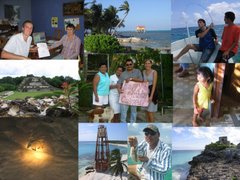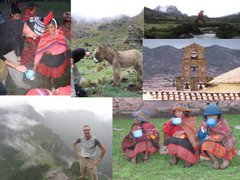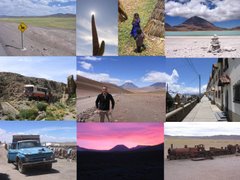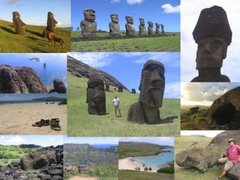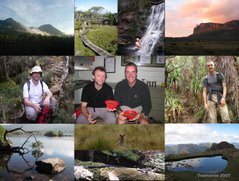On the other hand, I’d like to look at it this way: the reason it was so difficult to leave is because everything has worked out so well for me here. I’ve been very fortunate. In particular, the project has been really rewarding for me (and should hopefully be of great value to BCVI), discovering Belize has been a joy, and I’ve made some great friends.
The Project has gone really well

“Do I really have to read this thing? It’s painful just picking it up.” I hand over my 22,000-word report to BCVI Director, Mrs Joan Musa.
Between June and August of this year, I walked 500 miles around Scotland (and London), raising over £3,000 of funding towards a Challenges WorldWide organised project with the Belize Council for the Visually Impaired. Now that the project is completed, what d
 id all that fundraising achieve? Was it worth it?
id all that fundraising achieve? Was it worth it?When I arrived on the 7th of September my goal was to “develop a financial plan incorporating forecasts and financial planning advice to ensure financial sustainability for BCVI.”
Over the following three months, I carried out research into the eye-care sector in Belize, interviewed BCVI staff, and developed a financial model based on BCVI’s accounting system. The key outputs were (1) a 65-page report setting out all my findings, providing financial forecasts for BCVI to 2010 and setting out 9 key recommendations to help ensure future financial sustainability and; (2) a spreadsheet-based model, which BCVI staff will be able to use in future to carry out their own financial modelling.
The feedback I’ve had so far has been very positive – in the short term, BCVI’s director plans to share the report with BCVI’s key funders in advance of discussions about BCVI’s future funding. In the longer term, I hope some of the recommendations I’ve made will be adopted and will help strengthen BCVI’s finances. This will help BCVI extend their lifeline services to an even greater share of Belize’s poor population.


LEFT: Dana, Vic, Joan Samuels, Lisa, Joan Musa and Kaiser Sose
RIGHT: Dana takes Christa’s place behind the camera. Hi to Naomi and Mark who weren’t in on my last day.
Hope this reassures everyone who made a donation that the money was well spent, especially those of you who were beginning to suspect that your donations had gone into a slush fund to finance deep-sea diving, rampant consumption of rum/belikin, and the bribing of border guards.


What it’s all about. BCVI and CARE at work
Travelling in Belize has been superb
And I managed to get to Mexico, Guatemala and Honduras as well.
Mexico
Travelling in Belize has been superb
And I managed to get to Mexico, Guatemala and Honduras as well.
Mexico

 Honduras…
Honduras…


And lastly (new) Friends and Family
It was a real stroke of luck to stay with Evan and Mari. They fed me, entertained me and looked after me, and put up with my dodgy Spanish for three months - above and beyond the call of duty. I am extremely grateful.
I’ve made some great friends here. Hope it all goes well for Karin back in Sweden, Kirsty - who’s done a great job cataloguing the history of the Red Cross here and has made a superb documentary about it – and Dorothy, who’ll be here for almost another two years with Peace Corps.

And I will especially miss my long-suffering (at least as long as I was driving) travelling companion Teri.

Maybe the 3 months have passed pretty quickly, but it honestly feels more like I’ve been here for a year. I’ve really enjoyed life in Belize – if I win the lottery I’m coming back to do this permanently. But for now I have to move on.
Next stop deepest, darkest Peru. I’ll be out of email contact whilst in the mountains so I just want to say have a fab Christmas and New Year. Please keep in touch and I’ll be back online soon.
 Merry Xmas from Teri and I to one and all.
Merry Xmas from Teri and I to one and all.  Sun sets on Belize
Sun sets on Belize 











 Cahal Pech
Cahal Pech





 From La Ceiba, we caught the ferry to Roatan. Roatan is quiet, beautiful and laid back but compared to the mainland it seemed touristy. Up to that point, we had seen 6 other gringos in two days in Honduras.
From La Ceiba, we caught the ferry to Roatan. Roatan is quiet, beautiful and laid back but compared to the mainland it seemed touristy. Up to that point, we had seen 6 other gringos in two days in Honduras.






